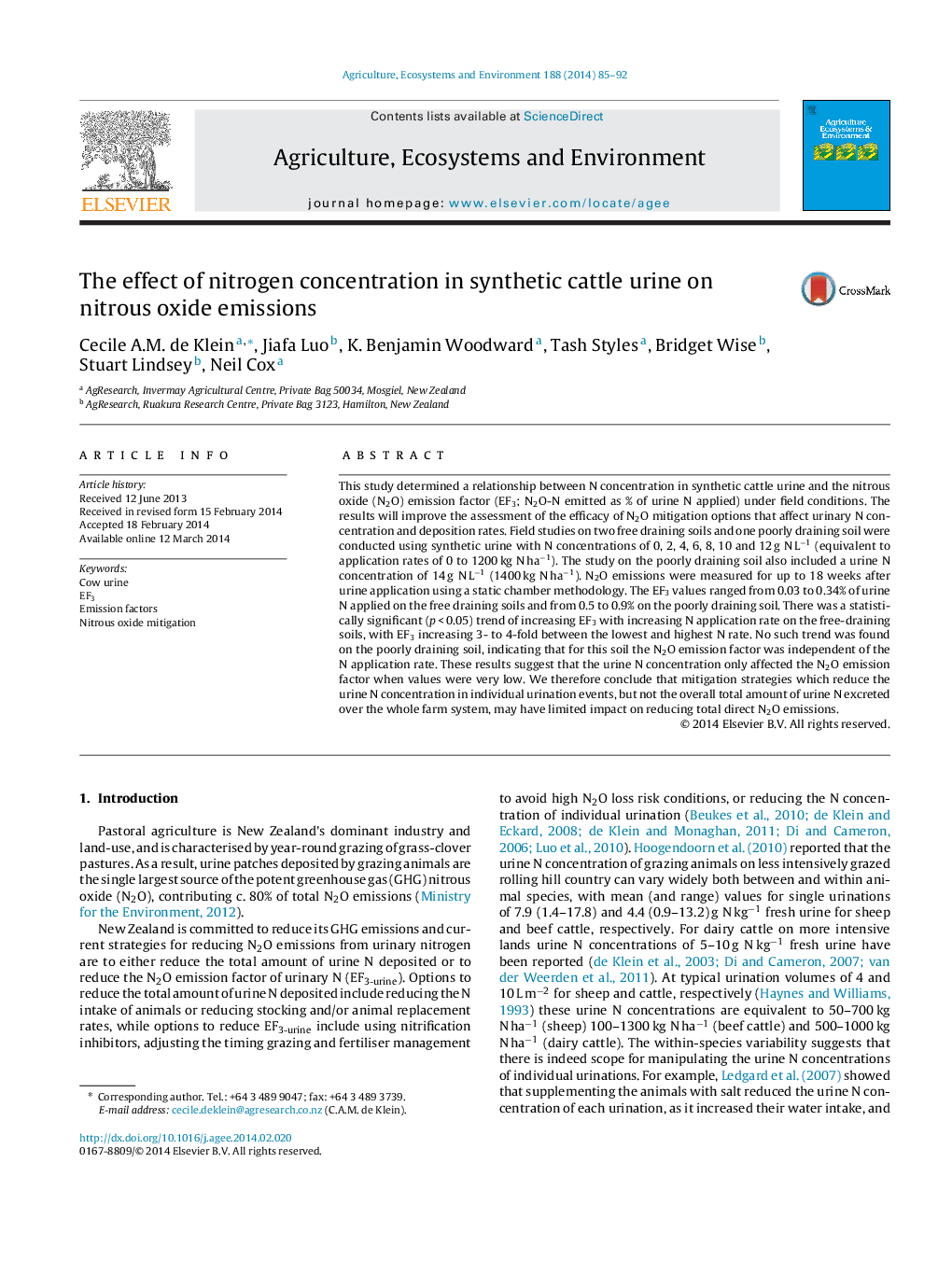| Article ID | Journal | Published Year | Pages | File Type |
|---|---|---|---|---|
| 8487848 | Agriculture, Ecosystems & Environment | 2014 | 8 Pages |
Abstract
This study determined a relationship between N concentration in synthetic cattle urine and the nitrous oxide (N2O) emission factor (EF3; N2O-N emitted as % of urine N applied) under field conditions. The results will improve the assessment of the efficacy of N2O mitigation options that affect urinary N concentration and deposition rates. Field studies on two free draining soils and one poorly draining soil were conducted using synthetic urine with N concentrations of 0, 2, 4, 6, 8, 10 and 12 g N Lâ1 (equivalent to application rates of 0 to 1200 kg N haâ1). The study on the poorly draining soil also included a urine N concentration of 14 g N Lâ1 (1400 kg N haâ1). N2O emissions were measured for up to 18 weeks after urine application using a static chamber methodology. The EF3 values ranged from 0.03 to 0.34% of urine N applied on the free draining soils and from 0.5 to 0.9% on the poorly draining soil. There was a statistically significant (p < 0.05) trend of increasing EF3 with increasing N application rate on the free-draining soils, with EF3 increasing 3- to 4-fold between the lowest and highest N rate. No such trend was found on the poorly draining soil, indicating that for this soil the N2O emission factor was independent of the N application rate. These results suggest that the urine N concentration only affected the N2O emission factor when values were very low. We therefore conclude that mitigation strategies which reduce the urine N concentration in individual urination events, but not the overall total amount of urine N excreted over the whole farm system, may have limited impact on reducing total direct N2O emissions.
Keywords
Related Topics
Life Sciences
Agricultural and Biological Sciences
Agronomy and Crop Science
Authors
Cecile A.M. de Klein, Jiafa Luo, K. Benjamin Woodward, Tash Styles, Bridget Wise, Stuart Lindsey, Neil Cox,
